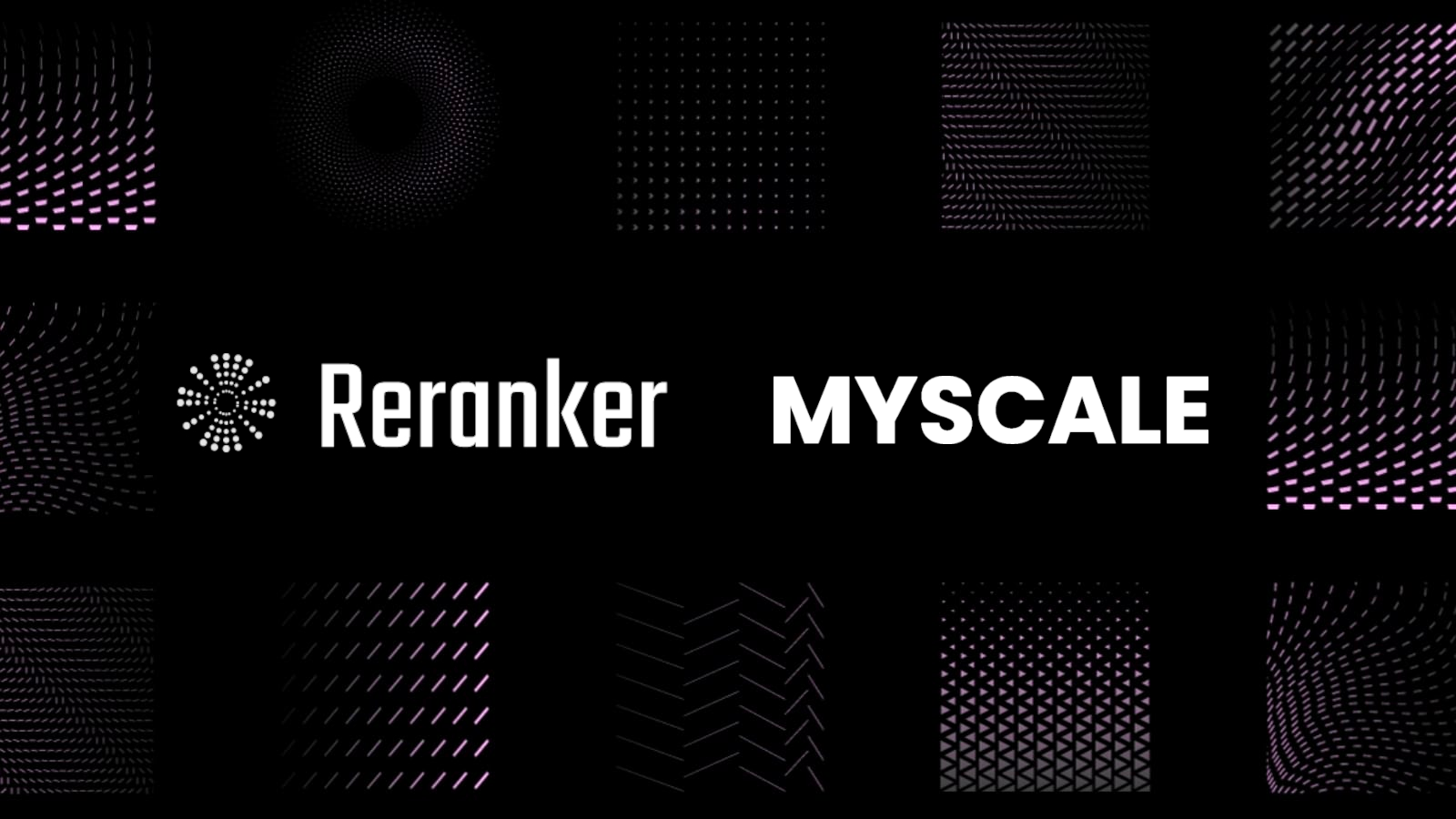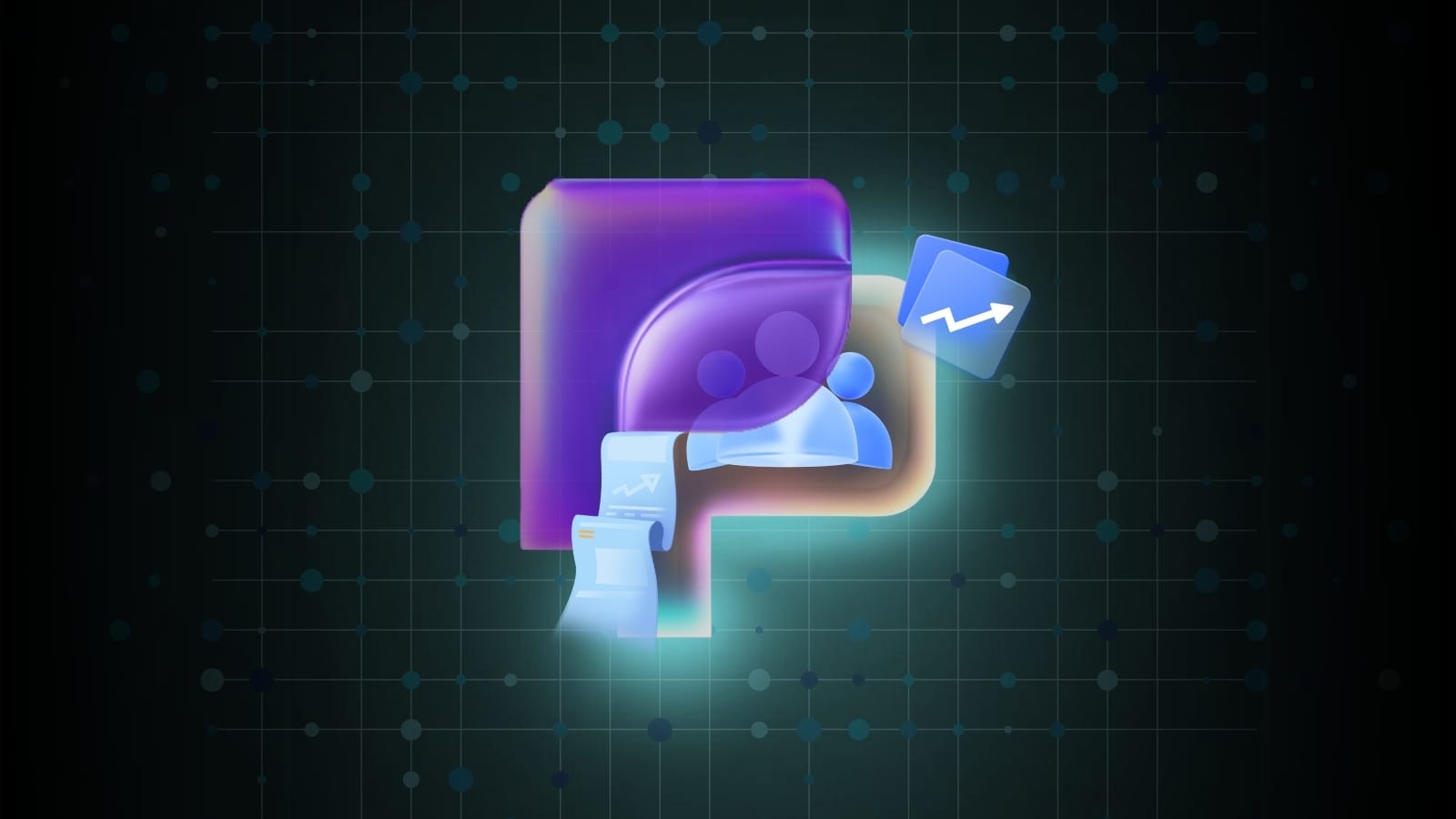'Twas the night before Christmas,
And all through the house,
Not a creature was stirring,
Not even a mouse.
Scene: Jina AI's CEO, Han Xiao, sitting in front of a dwindling fireplace, typing feverishly into his laptop. His hair is disheveled and his five o'clock shadow is now looking more like eight o'clock. We zoom in on him to hear him tell his story

VOICEOVER: HAN
Indeed, not a mouse was stirring that night. But one was clicking, as I sat at my laptop and worked through the wee hours.
As I sat in front of the fireplace, the warmth of the flames soothing my tired eyes, I couldn't help but feel a sense of purpose. I had been working tirelessly on a project that I believed could change the world for the better. I was driven by a deep desire to use my skills and expertise to make a positive impact, to help people make more informed, smarter decisions.
And possibly (just possibly) put those overpriced arrogant bastards at McKinsey out of a job.
But it wasn't easy. The hours were long and the work was grueling. I had sacrificed time with friends and family, even skipping out on Christmas celebrations, just to see this project through to the end.
And there were moments of doubt, when I questioned whether it was all worth it. As I sipped on my cold cocoa and watched the fire die, I couldn't help but feel a twinge of sadness. "Bah, humbug," I muttered to myself, feeling the weight of my solitude.
So, what is this project? I'll give you a hint: I had previously written about how LLMO would kill SEO, but I wanted to take large language models further and apply them to more areas of everyday life. ChatGPT and generative AI in general have been causing a lot of concern about putting people out of jobs, but I believe we can use this technology to help people instead. That's why I'm launching Rationale, a product that I hope will make a difference in the world.
tagWhat problem does Rationale solve?
Making decisions is tough.
We're drowning in information that we have to take action on. And then, on top of that, we need to find more information to work out exactly which actions to take.
And that second level of information? Search engines return pages and pages of bullshit sites that disagree with each other, and some questions just aren't easy to research. For example:
As the CEO of a 2 year old startup with 50 employees and series A funding, should I give my employees a raise during these difficult financial times?
Good luck getting something that even matches enough search terms, let alone provides guidance.

There needs to be an impartial tool to help you make decisions that returns just the information you need. Rationale does that. You don't need to read through countless articles or fork money over to expensive consultants who'll recommend doing what you were going to do anyway.
While Rationale won't tell you what to do, it will give pros and cons or a SWOT analysis about your potential course of action. Simple as that. No endless googling. No frills. No bullshit.
tagSo what is Rationale?
In short, Rationale is a tool for making better decisions. But to better understand how it works, let's use some familiar examples.

- Rationale is kind of like the coin flipped by Two-Face in Batman (or Donald Duck in Flip Decision). The coin tells the flipper what to do next.
- Rationale is kind of like the death crystal in Rick and Morty. When Morty strapped it to his head, he could see different futures based on every potential course of action.
- Rationale is kind of like the Ghost of Christmas Yet to Come in A Christmas Carol. Ebenezer Scrooge led a mean, cruel, penny-pinching life. It took that ghost to show him where he would end up if he continued down that path, with his "friends" celebrating around his grave, and the death of Tiny Tim. Only by seeing the negative potential future could he change his fate.
So, Rationale is kind of like the coin, crystal, or ghost, but with a brain (or rather, a large language model and handcrafted prompt). Instead of giving you a simple "yes" or "no" or predicting the future, Rationale allows you to input a decision and then shows you the pros and cons (or other analyses - see below!) of that decision based on your user profile. It's primarily aimed at businesses, but can be used for all kinds of "should I..." decisions.
We're not only building Rationale, but putting our money where our mouth is by using it internally to help make decisions and plan the future of Jina AI. We believe in its effectiveness and are confident it can make a difference for other businesses as well.
tagDoes it really work?
It's important to remember that no system, human or machine, is perfect. But Rationale has a track record of providing logical answers more often than not, especially for real-world business decisions:


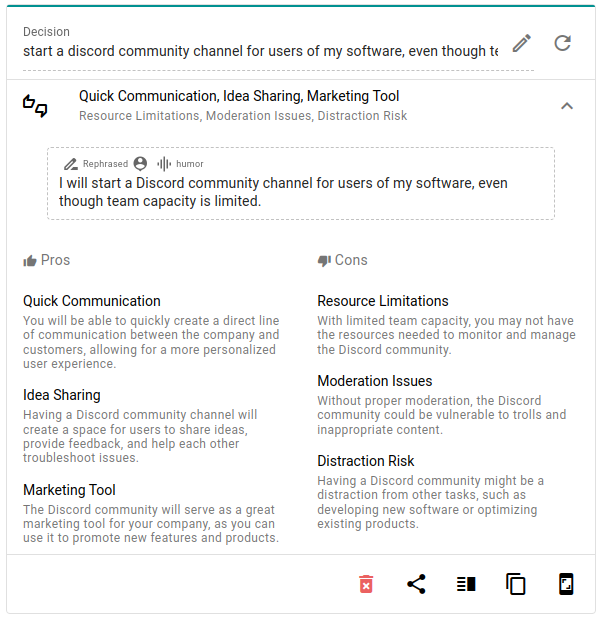
It also works for more, ahem, unconventional decisions:



tagGoing beyond pro's and cons
Rationale doesn't just help by giving advantages and disadvantages. It has a bunch of other modes and functionalities to help you make better decisions.
tagOutcome analysis mode
What if you tell your boss you quit? And then what are knock-on effects of that? And then the knock-on effects of that?
Outcome analysis mode lets you look into your potential multiverse. Like a crystal ball of fracturing timelines, it presents a peek at your potential futures and shows which outcomes are positive, negative, or neutral.
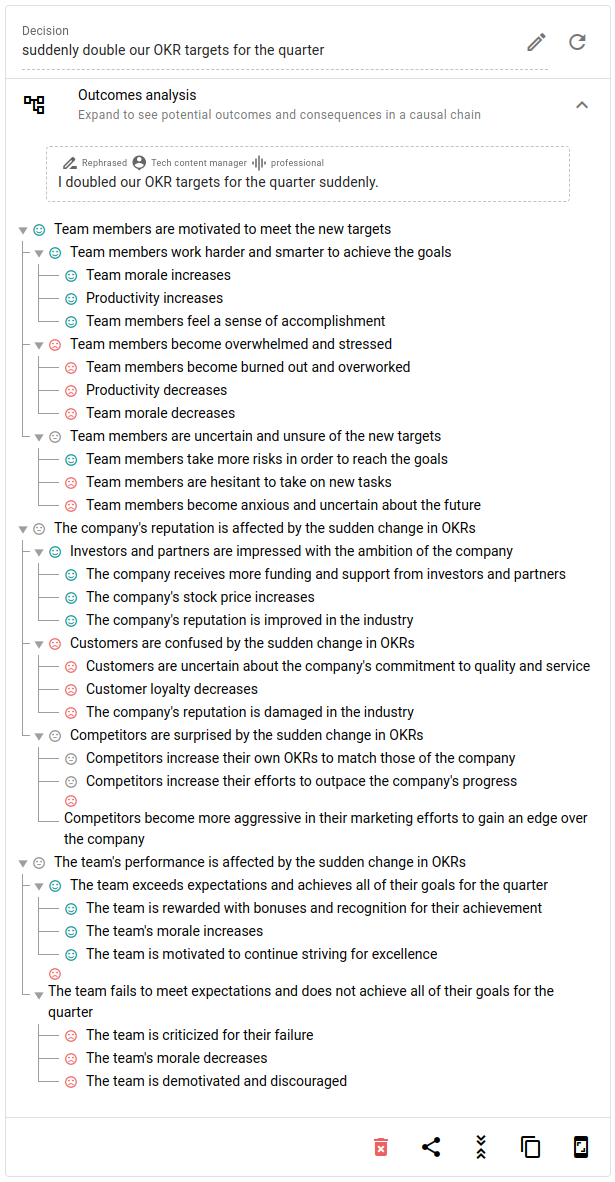
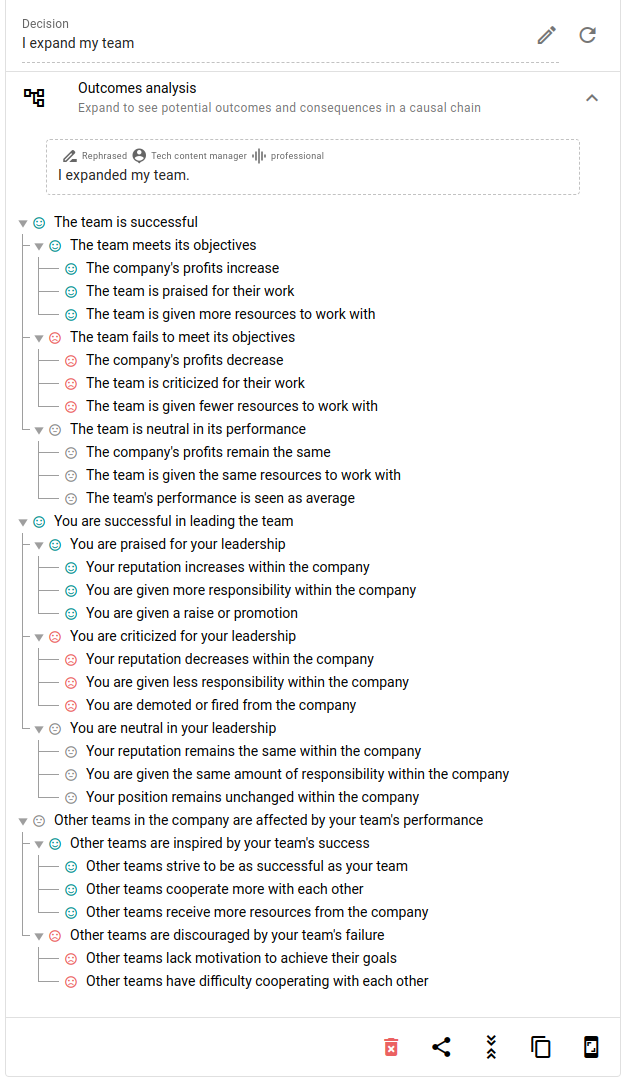
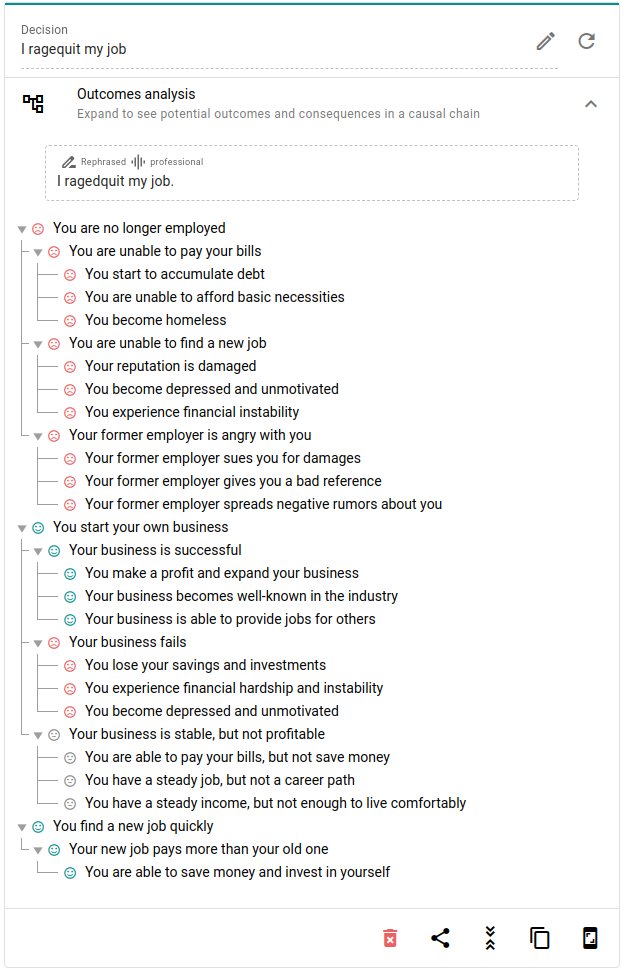
tagSWOT mode
A strengths, weaknesses, opportunities and threats analysis is a very common tool in business for making decisions on projects or the organization. It's often used in business and strategic planning, marketing and branding strategy, and problem-solving and decision-making.
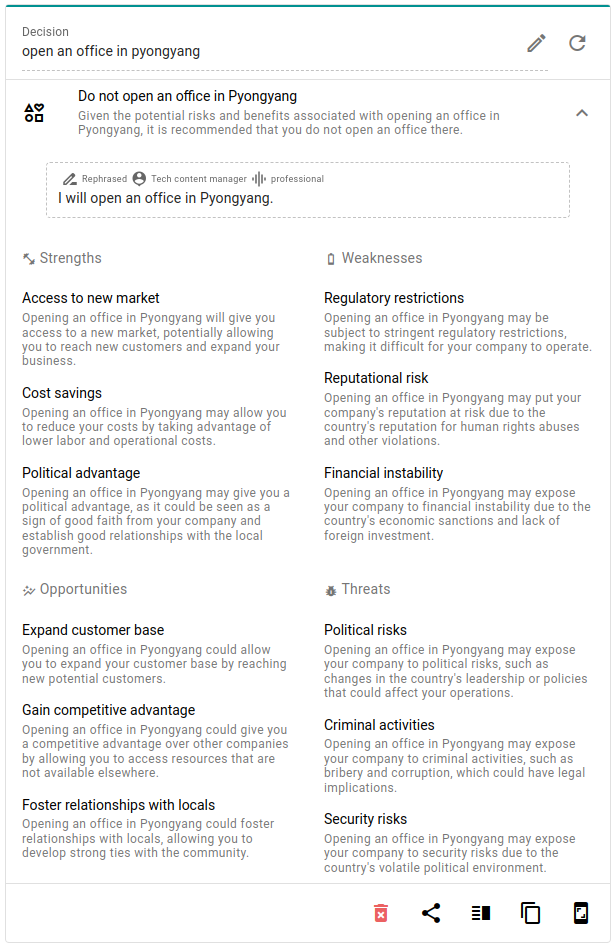
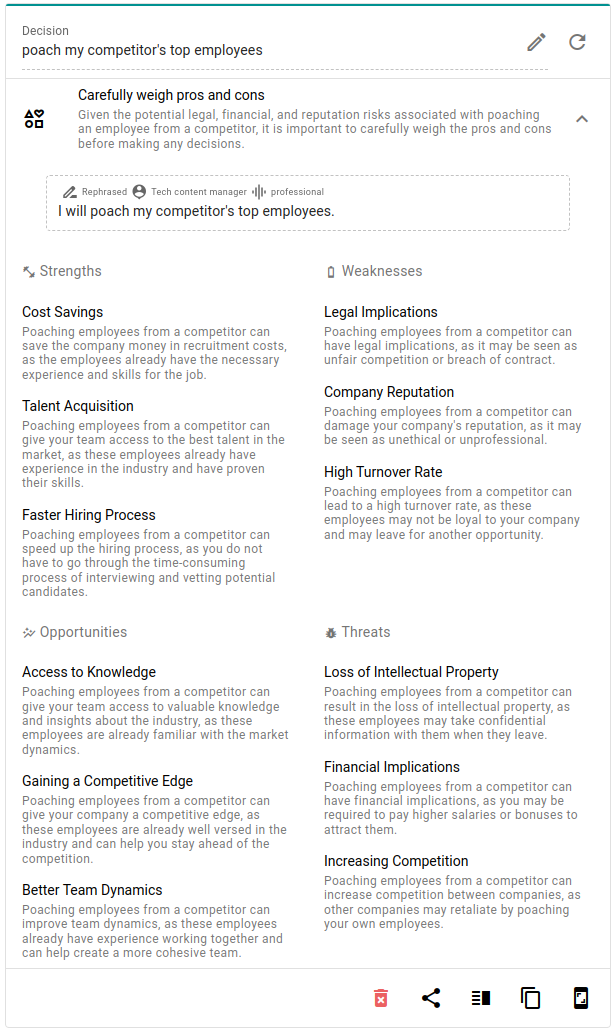
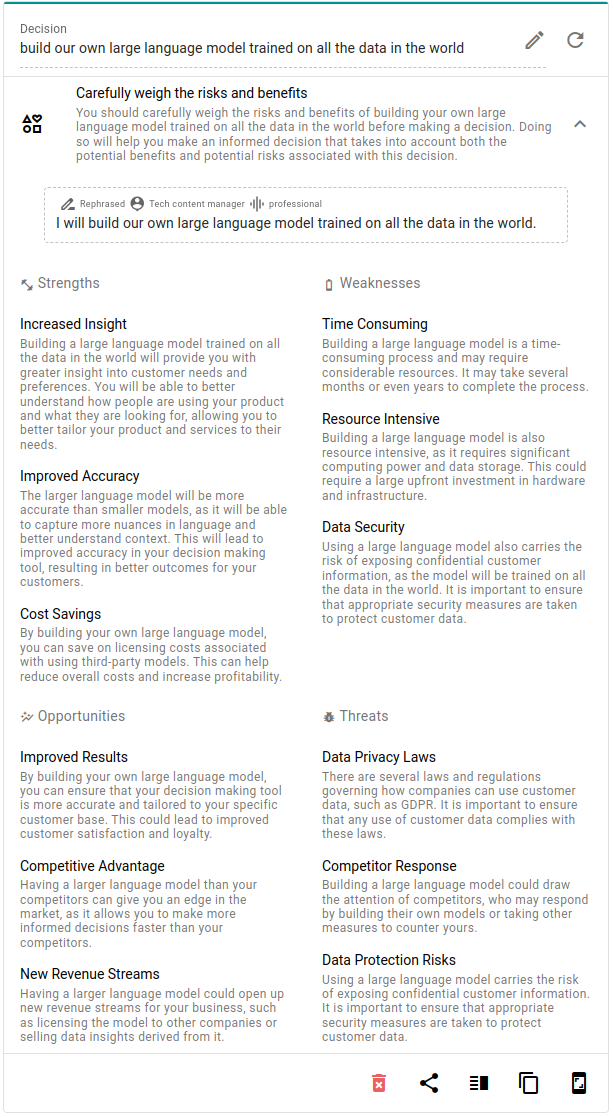
tagMulti-choice mode
Which company department to expand? Which cost savings to make? Heck, what to eat for lunch?
Some decisions aren't just yes/no or pro/con. That's where multi-choice comes in. Type in your choices and you'll get a report offering suggestions from different perspectives.
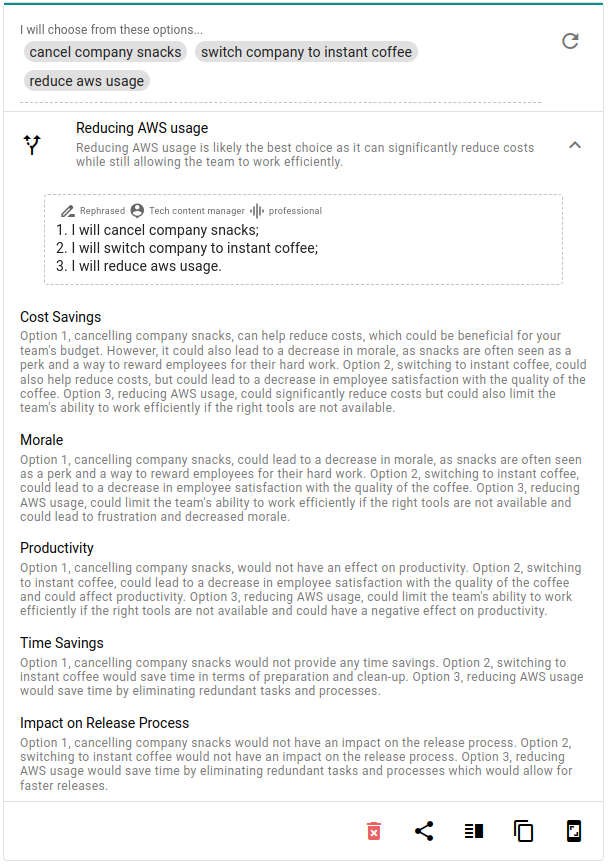
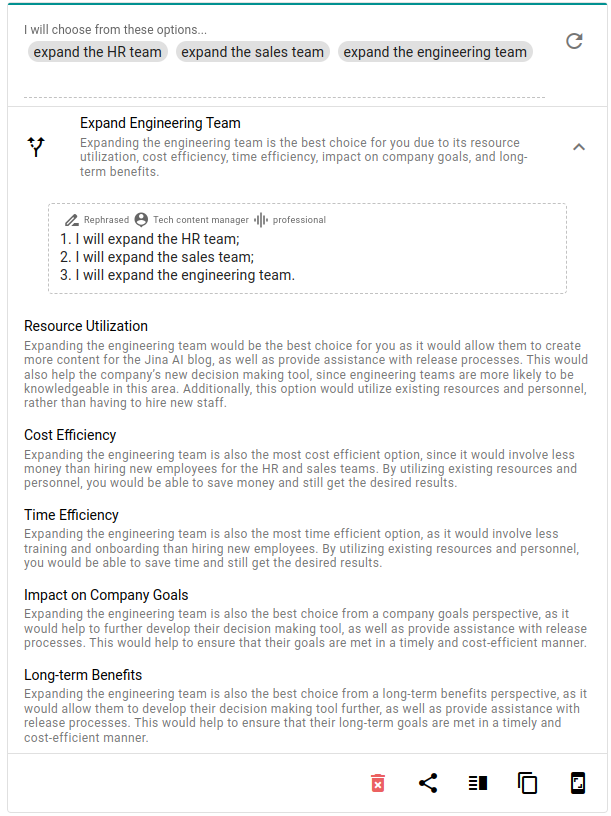
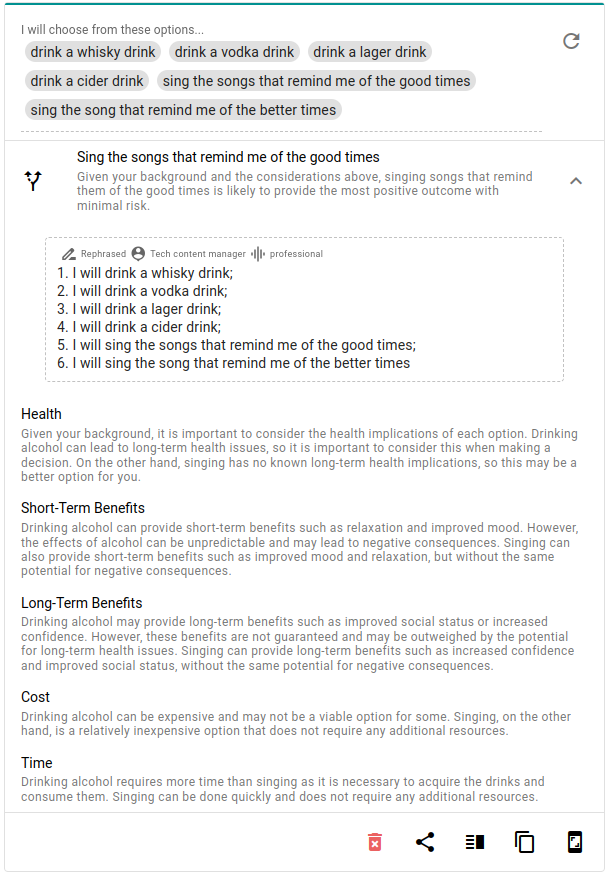
tagCustom profiles
Let's make things personal. Now you can create custom profiles to reflect the real you and better guide your decisions. Want to be a kick-butt boss who takes no prisoners, but also really work on your spiritual wellness? Or maybe just desperately lose a few pounds? The profiles feature has got you covered!



tagCan't I just use ChatGPT for this?
While prompt engineering may be the future (or at least a future) of programming, it's not always as straightforward as it sounds. It can take hours of work and collaboration to create a prompt that provides MVP quality results. Even then, getting ChatGPT to remain focused instead of wandering off-prompt can be a headache.
Alternatively, you could just ask Rationale for a clear and logical answer to your decision-making needs. It's a simpler and more efficient solution:

tagEating our own dog food: Using Rationale at Jina AI
At Jina AI, we're all about staying on top of our game. That's why we're making it a priority for every team member to become a pro at using Rationale as a hard skill, especially our leaders and senior managers. By putting it to the test in the real world, we can keep making it better and better. It's like our super power for decision-making and strategy.
How often will we be using it? Well, let's just ask Rationale:



tagFAQ
tagWhy is it called Rationale?
Because we didn't think anyone would want to use a product called Death Crystal.

tagShould I really follow everything it says?
Good question! Here's what Rationale has to say about that:

tagDoes it always have such a serious tone? Can it cite sources?
You can customize the tone of Rationale to fit your style. We offer several presets, including "professional" (which cites sources where possible), "gen Z," "sarcastic," and more. The default tone is "concise," which provides short, straightforward answers for quick decision-making.

tagWhat kind of AI algorithms can be used for decision-making?
There are several AI algorithms that can be used for decision-making, including machine learning algorithms, deep neural networks, expert systems, decision trees, and rule-based systems. The right choice of algorithm depends on the specific requirements of the task and the characteristics of the data being analyzed. Each approach has its own strengths and limitations, so it's important to carefully consider which one is most suitable for the given problem.
tagHow does Rationale use cutting-edge technology to provide top-notch analysis?
Rationale is all about making great decisions, and to do that, we use the best technology around. That's why we've built Rationale on top of GPT, a state-of-the-art language model. With GPT under the hood, Rationale is able to analyze and understand written or spoken language with ease.
But we don't stop there. To really fine-tune our analysis, we use in-context learning to train the model on specific types of data or tasks. And to top it all off, we've developed a unique approach to generating analysis in multiple languages, which allows us to offer a wide range of language processing services. All this adds up to one thing: top-notch analysis that you can trust to help you make informed decisions.
tagHow can GPT and large language models make decision-making a breeze?
GPT (or large language models in general) are like super computers for natural language processing. They're able to analyze and understand written or spoken language, thanks to some fancy machine learning techniques (namely, deep learning). Basically, we feed them a ton of text and they learn all about the statistical patterns and relationships within that data. Then, when it's time to make a decision, we can use the model to analyze and understand new text data and make predictions based on what it's learned. So whether you're trying to decide on the best course of action for your business or just trying to choose what to have for dinner, GPT and large language models can help make the process a whole lot easier.
tagHow does in-context learning help?
In-context learning involves further refining the model's abilities by training it on specific types of data or tasks. For example, if you want to use Rationale to analyze marketing data, you could train the model on a dataset of marketing texts to improve its performance on that specific task.
By using both GPT and in-context learning, Rationale is able to generate analysis that is accurate, coherent, and tailored to the needs of the user. The unique approach to generating analysis in multiple languages further enhances its capabilities, allowing it to provide a wide range of language processing services.
tagUse Rationale for yourself
You can sign up for a beta account today at rationale.jina.ai and get 20 free decisions. After that, we have several affordable plans to choose from. So in 2023, you won't have to risk the Ghost of Christmas Future showing you your terrible mistakes. With Rationale, you can make the right decisions ahead of time and let him have a night off. Try it out and see how it can help you make better, more informed choices.




